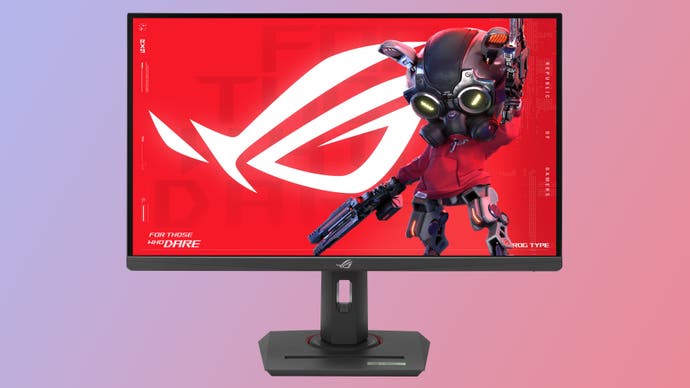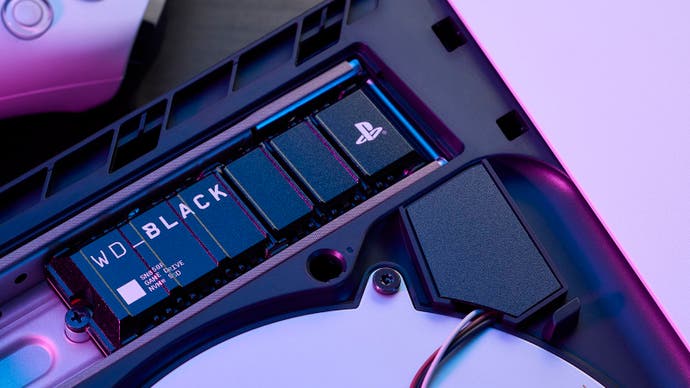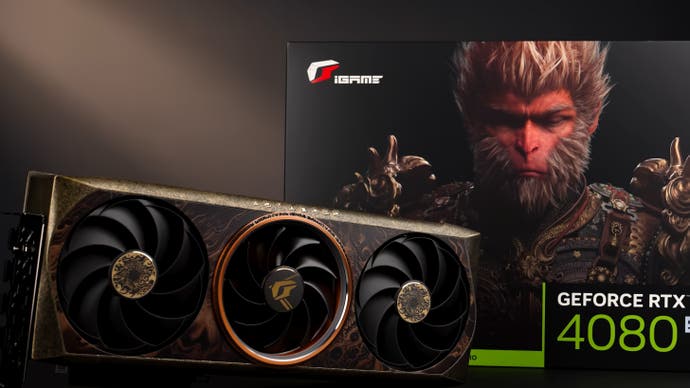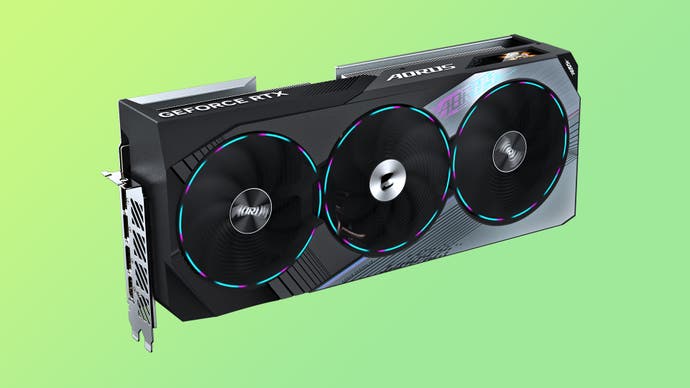The coolest PC hardware announced at Gamescom 2024: six stories from Köln
Ryzen 9000 mobos, a PC handheld, Wukong GPUs and more.
Gamescom 2024 is officially underway in Cologne - and alongside a raft of game announcements at Opening Night Live, a lot of new PC hardware has also been shown off for the first time.
Here are my personal highlights from the show so far, including next-gen AMD Ryzen motherboards, a promising new PC handheld, big news in the gaming monitor space and a host of special edition hardware to celebrate the meteoric launch of Black Myth: Wukong.
Take your pick from the six headlines below, or scroll on!
- AMD X870 and X870E motherboards have finally arrived
- Zotac Zone PC handheld - can it rival the Asus ROG Ally X?
- Asus reveals the first dual-mode LCD monitor, swapping from 4K 160Hz to 1080p 320Hz
- WD announces 8TB SN850P PS5 SSD - but you should get the way cheaper SN850X instead
- Black Myth: Wukong and Warhammer 40K: Space Marine 2 Edition graphics cards revealed
- Nvidia switches the RTX 4070 to slower GDDR6 and ditches the G-Sync module to cut costs
AMD X870 and X870E motherboards have finally arrived

As you may recall, we tested out the confusingly subpar Ryzen 9000 lineup on the same 2022-era X670E motherboards that accompanied Ryzen 7000. A couple of weeks later, new X870E and X870 motherboards are finally ready, with Asus debuting eight X870E and X870 models at Gamescom - seven ATX and one ITX.
Like other AMD 800-series chipset models that have broken cover since Computex this year, they include niceties like WiFi 7 and USB 4, but Asus is looking to differentiate them with features like a higher-res UEFI, optimised "NitroPath" DDR5 RAM slots and latchless PCIe slots for graphics cards. There are also a host of "AI" features for overclocking, cooling and networking, the vast majority of which don't seem to use artifical intelligence in the traditional sense of the word, so we'll skip them for now.
Thankfully, the non-AI features are pretty exciting. I'm particularly looking forward to trying the new UEFI shipping on these motherboards, which can show a live readout of all connected components on a diagram - with details made clearer by a higher resolution interface. You can jump immediately from this diagram to relevant settings for a connected device that you select; eg to the fan settings when looking at a connected fan header.
| | |
The top two motherboards in the lineup, the X870E Hero and the Strix X870E-E Gaming WiFi, get DDR5 design optimisations under the "NitroPath" brand, including gold finger pins, shorter signal pathways and stronger retention mechanisms. Asus claims that this can allow for 400MT/s higher RAM speeds than their traditional designs, which could be nice for anyone going beyond the usual 6000MT/s sweet spot. All X870E/X870 motherboards include JEDEC support up to DDR5-5600 and real-time memory overclocking in Ryzen Master, so RAM tinkering could be quite fruitful.
Finally, some motherboards have "Q-Release Slim" PCIe 5.0 slots, which allow graphics cards to be locked into place during normal use but easily removed with a specific movement, without needing to manually unlatch the slot or even press a button as we saw on Asus' original Q-Release PCIe slots. This is the first thing I'll test on the new motherboards, which ship in September.
Zotac Zone PC handheld - can it rival the Asus ROG Ally X?

Zotac is getting into the popular PC handheld game, joining the likes of Asus, Lenovo and MSI. Their Windows 11 handheld is called the Zone, and it comes with a Ryzen 8840U chipset, 1080p 120Hz OLED (!) display and a $799 price tag. That puts it directly against the (excellent) Asus ROG Ally X, and it's unfortunately hard to see why buyers would prefer the Zotac model.
In terms of specs, the Zone compares disfavourably to the ROG Ally X with a significantly smaller battery (49Wh vs 80Wh) and less RAM (16GB vs 24GB), with largely identical hardware elsewhere. That OLED screen is the one saving grace, and did prove exceptional on the Steam Deck OLED, but the Zone might still need to be a bit cheaper than the revised Asus handheld to stand a chance.
The software side of things is also dicey. Asus' Armory Crate software isn't a patch on SteamOS, but it's probably the most robust software solution we've seen on a Windows handheld, with even handheld veterans like Ayaneo struggling to match it. Zotac's software experience will benefit from improvements to the Game Bar that upgrade all Windows 11 handhelds, but it's unlikely to be as polished - and SteamOS may be a bit more challenging to get working on the Zotac device given that Valve is looking at the Ally specifically when it comes to porting over their operating system.
Still, early impressions of the Zotac Zone were largely positive, especially in terms of the quality of its controls, so we'll have to wait and see how the finished article performs when it arrives - likely in September.
Asus reveals the first dual-mode LCD monitor, swapping from 4K 160Hz to 1080p 320Hz

Back in the day, CRT monitors were pretty amendable to tweaking and changing. You could push them to hit way higher refresh rates by dialling back the resolution - and even this year we've seen enthusiasts hit 700Hz on old CRTs this way. LG was the first to apply this technique to new monitors, releasing a 32-inch OLED panel that could swap between 4K 240Hz and 1080p 480Hz modes in a matter of seconds. Now, Asus is introducing a 27-inch ROG Strix XG27UCG LCD monitor with similar "dual-mode" functionality, allowing for a choice between 4K 160Hz and 1080p 320Hz.
That's a nice combination for those that like the higher resolution for work or single-player gaming but still want a highly competitive screen for esports titles, and it should be cheaper than the 32-inch LG too. Expect this monitor towards the end of the year, with prices to come later.
WD announces 8TB SN850P PS5 SSD - but you should get the way cheaper SN850X instead

The WD SN850P is one of the best SSD upgrades for PS5, and WD has announced a massive 8TB model which costs $999/£719. Unfortunately, that's a huge premium over the identically-specced WD SN850X, which is available for £654 with a heatsink or £600 without at WD's official site. I'd highly recommend sticking with the SN850X, as its heatsink version is equally PS5 compatible, and of course both models can work inside a PC too. The only thing you're giving up is one month of PS Plus Premium membership, which is worth £13.49 - hardly worth it!
Black Myth: Wukong and Warhammer 40K: Space Marine 2 Edition graphics cards revealed - though you (probably) can't buy them


The excellent-looking Warhammer 40K: Space Marine 2 and technically-accomplished Black Myth: Wukong have both inspired special edition graphics cards at Gamescom, with Asus producing a special edition RX 7900 XTX for the former and a huge amount of Nvidia partners producing RTX 4070 to RTX 4080 Super designs for the latter. The Asus Warhammer design is beautiful, but only 20 have been made so you'll have to win a giveaway to get one.
The Wukong graphics cards look like they're entering slightly fuller production, with listings on JD.com for the Chinese market. The most powerful options are the Colorful RTX 4080 Super iGame Advanced and Galax RTX 4070 Ti Super 20th Anniversary, but there are also six different RTX 4070 Super special edition models from MSI, Gigabyte, Zotac, Inno3D, Gainward and Manli. The cheapest Wukong special edition GPU goes for 4949 RMB (~£530) and the most expensive is 9199 RMB (~£990).
Nvidia switches the RTX 4070 to slower GDDR6 and ditches the G-Sync module to cut costs

Finally, here's a bit of a weird one: Nvidia has confirmed that its partners are now making RTX 4070 graphics cards with GDDR6 memory, rather than the faster GDDR6X that comes on the standard RTX 4070 and all higher-tier Nvidia RTX 40-series graphics cards. The move is described as a measure "to improve supply and availability to meet strong demand" and presumably allows for both a lower bill of materials cost and access to more readily available GDDR6 modules.
I'm not a fan of these sorts of news, as most buyers won't be aware of the change and would reasonably expect the same performance as the GDDR6X version. Nvidia is claiming the new variant offers "similar performance", and with around a five percent drop in memory bandwidth from 21Gbps to 20Gbps, we would expect performance would be well within this margin in most workloads. Still, these cards ought to come clearly labelled and with a commensurate discount - we'll have to see if that's the case.
Nvidia also announced that its G-Sync tech has been transplanted into MediaTek scalers, replacing the separate Altera FPGAs that made full-fat G-Sync monitors around $100 more expensive than their FreeSync and G-Sync Compatible counterparts. The new MediaTek scalers debut in the AOC Agon Pro AG276QSG2, Acer Predator XB273U F5 and ASUS ROG Swift PG27AQNR, all of which are 1440p 360Hz models expected by the end of the year. All three will support G-Sync Pulsar, which combines variable frequency BFI and VRR, so it'll be fascinating to see that technology in the flesh - especially if these models cost less than standard G-Sync monitors.
That just about does it for now, but there's plenty more I wish I had time to write about. Some interesting stories that didn't make the cut include Crkd's tiny yet functional gamepads, higher-spec and nicely designed Philips Evnia 8000-series monitors and HP Omen peripherals including the beautiful-looking HyperX Alloy Rise 75, a 15,000 hour wireless gaming keyboard.
Thankfully, the good folks at the Eurogamer news desk have written up a non-PC hardware reveal: the digital, white-chassis Series X is up for pre-order.
I'm sure there'll be more from Gamescom before the show closes, so stay tuned - and if you're at the event, you can pick up a Digital Foundry or Eurogamer shirt from the IGN merch store on the show floor.


.png?width=291&height=164&fit=crop&quality=80&format=jpg&auto=webp)




